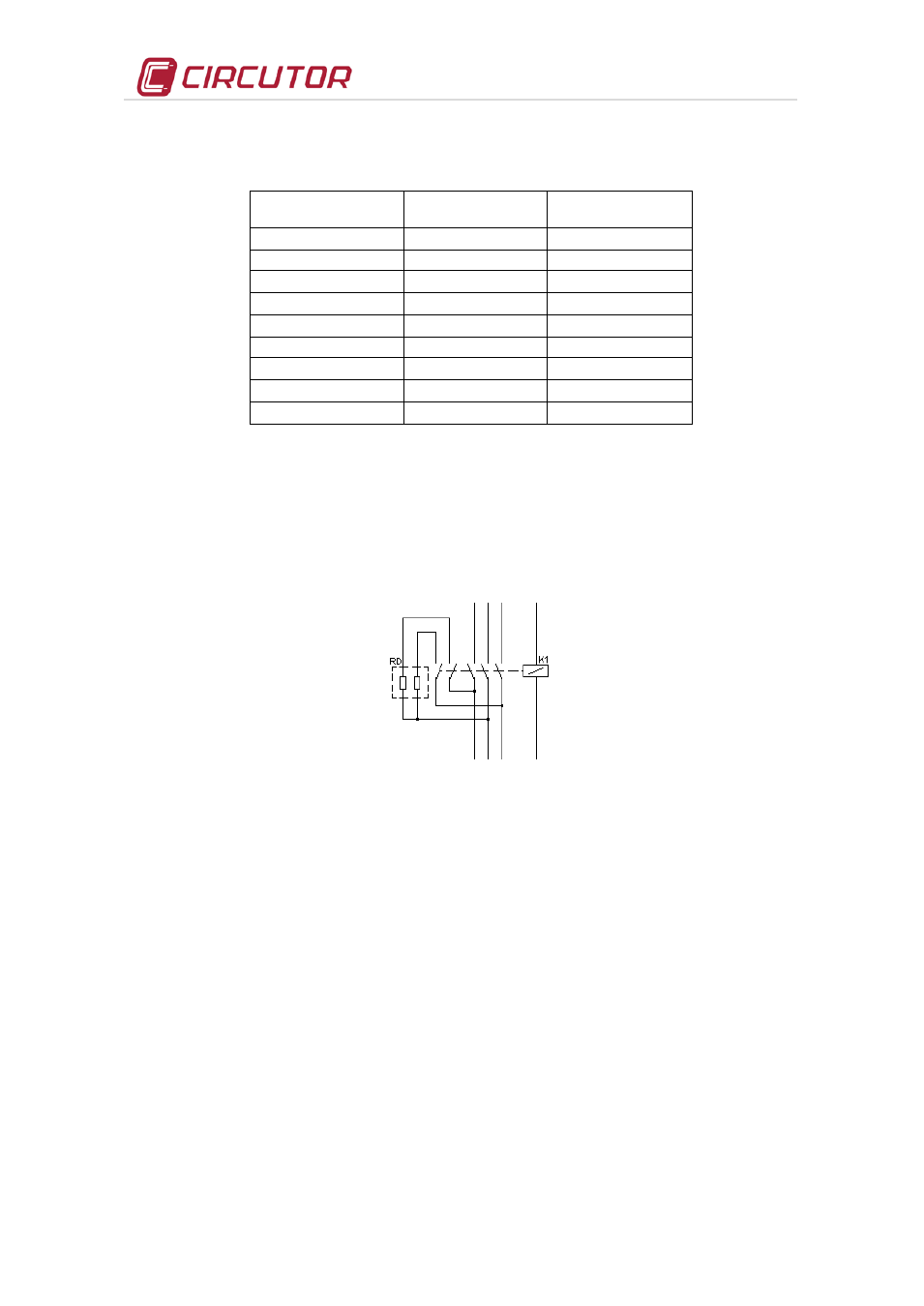3 key points for inspecting contactors, 4 key points for inspecting capacitors, Key points for inspecting contactors – CIRCUTOR OPTIM Series User Manual
Page 16: Key points for inspecting capacitors

OPTIM SERIES
16
Table 7-2.- Tightening torques of the cables to contactor terminals
MODEL
Auxiliary (Nm)
POWER (Nm)
MC-12
1.3
1.6
MC-18
1.3
2.2
MC-32
1.3
2.9
MC-40
1.3
2.9
MC-50
1.3
4.5
MC-65
1.3
4.5
MC-75
1.3
4.5
MC-85
1.3
4.5
MC-150
1.3
9
7.2.3 Key points for inspecting contactors.
• Check that the plastic parts are not blackened and do not show signs of burning or hardening.
• Check that the head is properly inserted
• Check the tightness of cables and terminals, as shown on table 7-2
• The terminals must be clean.
• In the case that the bank includes RD discharge resistors, check they are in good condition
(they are not open or show signs of burning).
Fig. 7-1.-
Connection of the discharge resistors
• Cleaning the contactors: In dirty environments (dust, sawdust, rust particles, etc.) vacuum the
contactor periodically. There is no estimated time frame for cleaning, it depends on the amount
of dirt that is inside the bank.
7.2.4 Key points for inspecting capacitors.
• Inspect the cables and terminals. They should not be overheated or blackened.
• The terminals must be clean.
• The slow discharge resistor must be in good condition (they should not be open or show signs
of burns)
• Check the tightness of capacitor terminals, as shown on table 7-3
